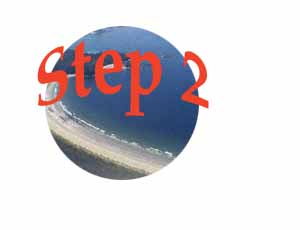-------

Greenhouse Sources
The Process
Transitioning to an environmentally responsible organization is an
enormous undertaking.
-------

Greenhouse Sources
Transitioning to an environmentally responsible organization is an
enormous undertaking.
The Task Force at the National Polytechnic University has been assigned to
find the answers to all of these questions. But in order to produce a comprehensive,
well-researched report with solid recommendations, all the members must:

The Basics
Meet with your team to determine what background information all of you must know. Divide the material so that everyone is responsible for knowing the basics and is capable of explaining it clearly to other people, before moving on to your respective role(s).
Review the background information provided in the links below. Keep in mind the 5 Ws and an H (Who, What, When, Why, Where, and How). You will probably find many other links. Share them with other and discuss the information.
What is the Environmental Assessment Act
of

What is the Kyoto Accord?
What is an Environmental Management policy? Check out these links:
What are ISO
14000 standards? Check it out:
- What are
the benefits to going green?
- What are
some of the best
practices for going green?
- What are
the basic steps
to begin this process?
The following organizations have an environmental policy in place.
Can you find others?
-
Motorola

Other resources:
- Climate
Change Plan for Canada
- Environmental
Protection Act of Canada
- Design for Environment
Guide, National Research Council of
-
Social Investment Organization
- Canadian Businesses for Social Responsibility

Individual Roles
Now it’s time to tackle the question “What does it take to go green?”
You might have a hunch about this because you have some basic information.
But now you must tackle the question from a particular point of view. How
will your department respond to the initiative? What role will it play? What
impact will the initiative have on your department’s operations and your staff?
By
taking on one of the roles outlined below, you will be responsible for that
area of expertise. Once you have finished your individual research you can
pool all the information for the outcome of this project – the report.
Ensure that all members of your team understand fully the information you
contribute. Conversely, ensure you fully understand the information contributed
by your colleagues. Any one of you may be called on to present the information,
answer questions and clarify points of information at the end of your PowerPoint
presentation.
One person in your team should take on at least one role. If there are not enough members if your team, then one person could take on two roles. Below are recommended combinations for taking on more than one role:
| Five-person team | One person combines Dean of Academic Studies and Finance Manager |
| Four-person team | One person combines Dean of Academic Studies and Finance Manager Another person combines Marketing and Human Resources |
Each member of your group will be responsible for becoming an expert in the
role you have assumed. The following perspectives are the areas of expertise
from NPU.
Which one will you be?
| Dean of Academic Studies | Think about the impact this initiative will have.
For example:
How will Academic Studies respond to the initiative? What role will it play? What impact will the initiative have on your department’s operations and your staff? |
| Human
Resource Director |
Human Resource Director oversees the recruitment and hiring of new employees, Occupational Health and Safety issues, training, industrial relations, performance managment, etc.
How will this impact:
How will your department respond to the initiative? What role will it play? What impact will the initiative have on your department’s operations and your staff?
Check
these out, too: |
| Director
of Marketing |
The Marketing Director is responsible for public relations and marketing the products and services of the organization, NPU's corporate image, and corporate relations within the community.
How will your department respond to the initiative? What role will it play? What impact will the initiative have on your department’s operations and your staff? |
| Facilities Manager | As a Facilities Manager you are responsible for managing all the facilities in the University – this includes the planning and development of lands and properties, maintenance of the buildings and the building systems (think heating ventilation, air condition, waste systems – sewage, water, etc. – utilities systems, landscaping (including use of pesticides), roads, parking, run-off, storm sewers, janitorial services. Your job is a big one!
Remember – just because a question isn’t asked, doesn’t mean it can’t be!
How will your department respond to the initiative? What role will it play? What impact will the initiative have on your department’s operations and your staff? |
| Financial Manager | You are responsible for fiscal accounting, generating budgets, control
of the operating budgets costs and capital expenditures.
How will your department respond to the initiative? What role will it play? What impact will the initiative have on your department’s operations and your staff? Note: Communicating with the other experts on your team will be critical in order to get a true picture of the financial impact of the project. |
| Director
of Ancillary Services (Manager of non-Academic Operations) |
How will your department respond to the initiative? What role will it play? What impact will the initiative have on your department’s operations and your staff? Check this out: |

Putting It All Together
Now that all of you know the basics and know what needs to be done
in your area of expertise, you can begin to write the report.
The Report
The Presentation
Top
Process Introduction
Standards Learners
Process
Evaluation
Resources
Student Pages
Credits
Author